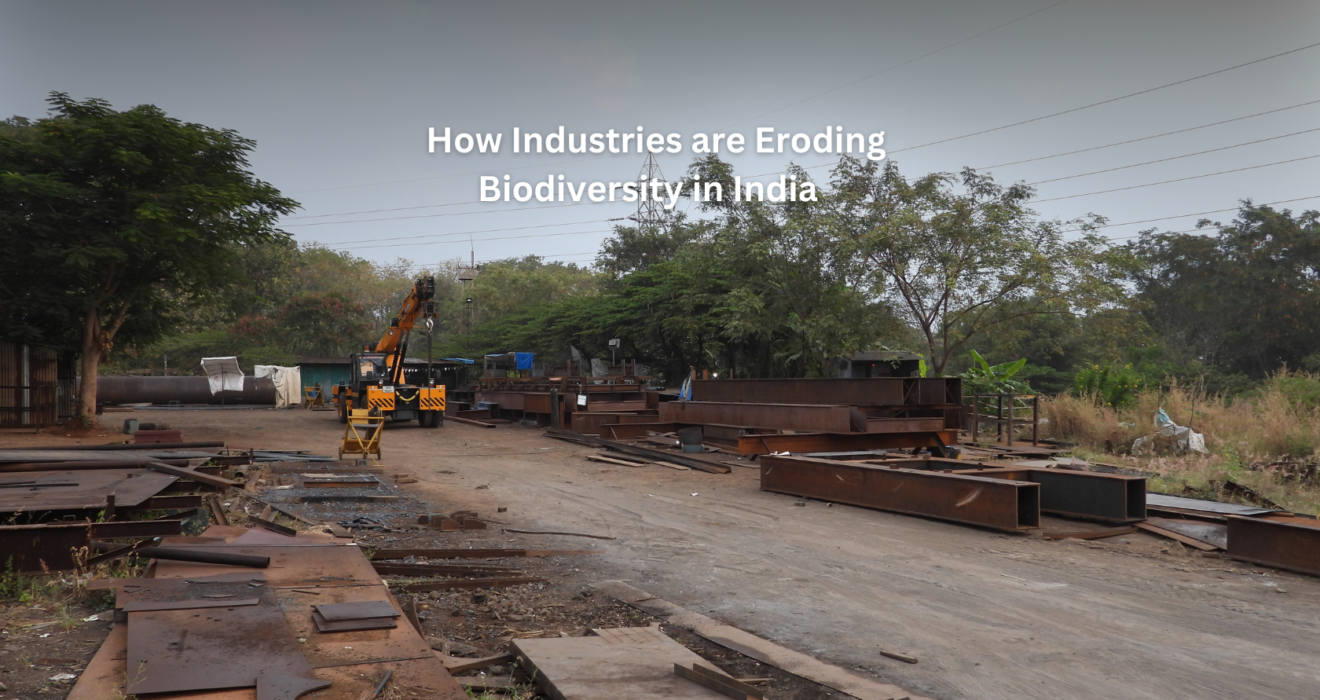As India embarks on its path of rapid industrialization, the balance between economic growth and environmental sustainability becomes increasingly tenuous. While industries are essential for driving the nation’s economy, their expansion has often come at a significant cost to biodiversity. India’s industrialization began in earnest in the late 19th century, but the liberalization policies of the early 1990s catalyzed unprecedented economic growth. This rapid expansion, however, has frequently prioritized immediate economic gains over long-term ecological sustainability, leading to significant environmental degradation.

The rising demand for resources has compelled companies to engage in practices that disrupt ecosystems. For instance, the construction of industrial facilities often necessitates clearing forests, creating a ripple effect that endangers local flora and fauna. This trajectory warrants critical evaluation, as the repercussions extend beyond environmental degradation to include economic consequences; ecosystem health is directly linked to human prosperity.
Deforestation is a pressing concern in India, driven largely by rapid industrialization. The country consistently ranks among the top nations for forest loss due to various human activities, particularly agriculture and urbanization. Recent reports indicate that India lost approximately 668,400 hectares of forest cover between 2015 and 2020, making it the second highest globally after Brazil. This loss has severe implications for local biodiversity, especially in regions like the Western Ghats—a UNESCO World Heritage Site—where habitat destruction threatens numerous endemic species and contributes to climate change.

In addition to deforestation, overfishing in Indian coastal waters poses severe threats to marine biodiversity. Industrial fishing practices, particularly trawling, have led to significant depletion of fish stocks, including crucial species like the Indian mackerel. Studies suggest that fish populations in certain areas have been reduced by as much as 50% over the past few decades. This decline not only jeopardizes marine ecosystems but also threatens the livelihoods of coastal communities that rely on fishing for sustenance.
Urbanization has resulted in habitat fragmentation across India, where large ecosystems are divided into smaller, isolated patches. More than 500,000 acres of wildlife habitat are reportedly lost each year due to urban expansion and infrastructure development. This fragmentation limits wildlife migration and reproduction capabilities, intensifying human-wildlife conflict and putting many species at risk. This pressing issue of habitat loss is further compounded by the extensive conversion of land for agricultural use, which has become a leading driver of biodiversity loss in India.
The Broader Impact of Land Use Change
Nearly 38% of India’s land area is devoted to agriculture, often relying on practices that degrade ecological health through excessive use of chemical fertilizers and pesticides. Consequently, the transformation of natural habitats into monoculture farms diminishes biodiversity and disrupts local ecosystems.
Pollution from Industrial Processes
Moreover, industrial pollution significantly contributes to biodiversity loss in India. Factories frequently discharge toxic waste into water bodies, which deteriorates aquatic ecosystems. As a result, agricultural runoff has created dead zones in rivers, adversely affecting fish populations and disrupting entire marine ecosystems. Thus, improved waste management practices are essential for reversing these trends and safeguarding water quality.
Overexploitation and Invasive Species

In addition to pollution, the unsustainable exploitation of natural resources—whether through illegal logging, overfishing, or unregulated hunting—contributes to the decline of numerous species in India. Species such as tigers, rhinos, and elephants face existential threats due to poaching and habitat destruction driven by human activities. Furthermore, invasive species like water hyacinth disrupt local ecosystems by outcompeting native species for resources.
The Role of Indian Industries in Biodiversity Preservation
Recognizing these challenges, Indian industries must acknowledge their ecological footprint and commit to sustainable practices that promote biodiversity conservation. Rather than viewing nature solely as a resource to be exploited, industries can actively contribute to restoring and protecting ecosystems.
Sustainable Resource Management
To address these issues, implementing sustainable resource management strategies is crucial. Industries should engage in responsible sourcing and sustainable land-management practices. For example, selective logging and reforestation efforts can mitigate the negative impacts of forestry on biodiversity. In agriculture, practices like crop diversification and organic farming can enhance ecological health while ensuring food security.
Pollution Reduction Initiatives
Additionally, reducing pollution is vital for protecting biodiversity. Industries should adopt cleaner production technologies and waste management practices to minimize their environmental impact. Transitioning to a circular economy—where waste is reduced and materials reused—can significantly lower companies’ ecological footprints while contributing to a healthier environment.
Promoting Biodiversity Awareness
Corporate social responsibility (CSR) initiatives focused on biodiversity conservation can be crucial in raising awareness within communities and among employees. By funding conservation projects and supporting local NGOs, industries can foster a culture of biodiversity awareness.
Terracon Ecotech has collaborated with leading companies such as Tata Steel, Hindalco, Ultratech Cements, Vedanta Group, and Mahindra Lifespaces on various biodiversity projects to promote sustainable practices and environmental stewardship. These partnerships have concentrated on restoring natural habitats, enhancing local ecosystems, and implementing innovative solutions to mitigate the impact of industrial activities on biodiversity. By leveraging the expertise and resources of these organizations, we strive to create a positive impact on the environment while fostering a culture of sustainability within the corporate sector.
Conclusion:
The interplay between industrial expansion and biodiversity loss in India presents a complex challenge that requires immediate and sustained action. As industries continue to grow, it is crucial to recognize the impact of their activities on ecosystems and wildlife. By understanding the historical context and the current drivers of biodiversity loss, stakeholders can appreciate the urgency of addressing these issues. Preserving biodiversity is not merely an environmental imperative; it is essential for ensuring long-term economic stability and prosperity.
The time to act is now.
As we move forward, let us embrace the responsibility to protect our planet’s biodiversity and recognize that a sustainable future is inextricably linked to our economic progress. Together, we can ensure that the cost of progress does not come at the expense of our invaluable ecosystems and wildlife.
Want to transform your industrial environment? Book a demo or speak with our experts today!

Written by
Anjeeta Goud
Team Business development and Strategy
Terracon Ecotech
Reference :
Threats to Indian Biodiversity




